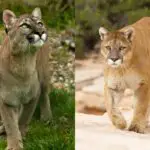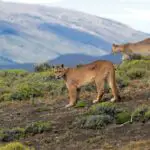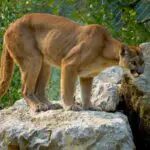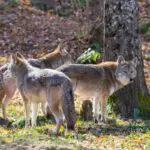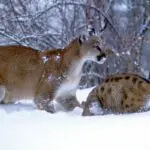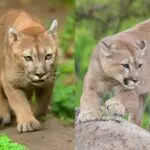A mountain lion and a bear are two clearly different animals. However, just how different are they actually?
The key differences lie in the fact that a mountain lion in a cat and a bear is more closely related to a big.
Bears are considered to be caniforms or dog-like carnivores.
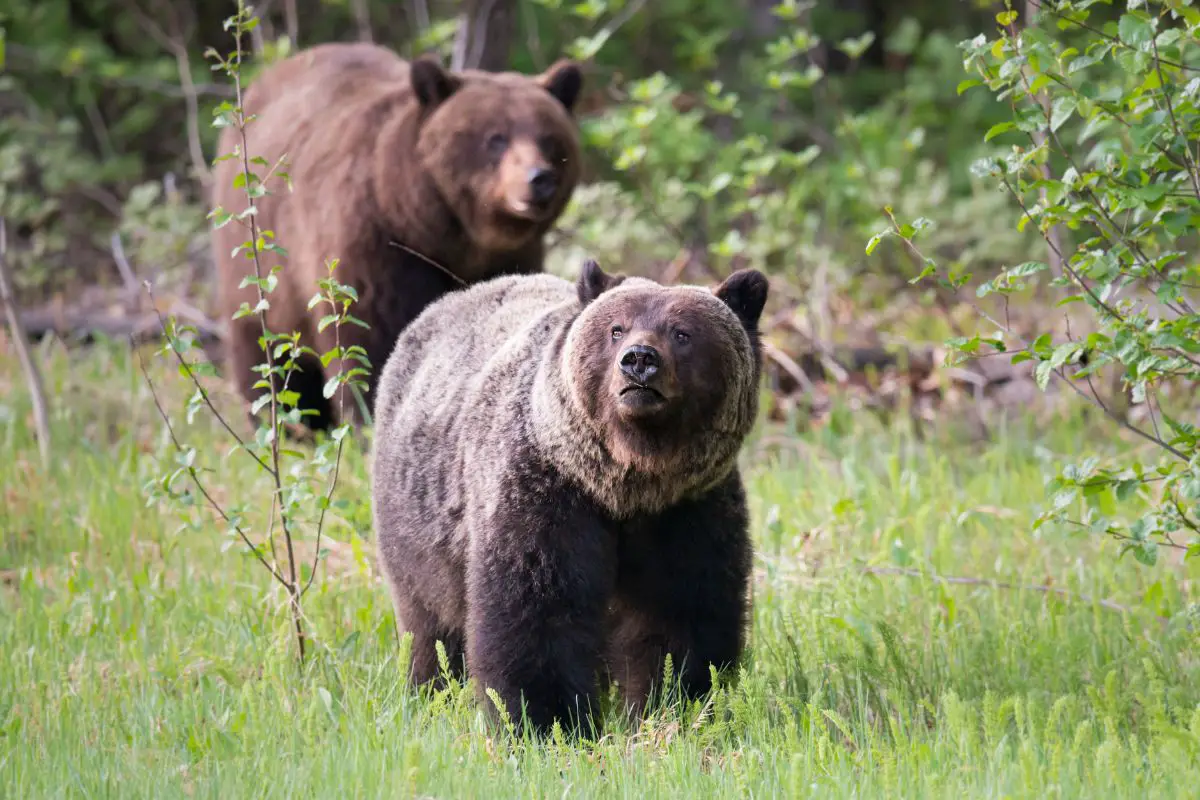
Mountain lions go by many names, and even have the record for the most English names.
They are called pumas, cougars, catamount, and many other names. There are six living subspecies of mountain lions, and one extinct subspecies – the Eastern mountain lion.
When it comes to bears, there are a number of bear species. These include the famous brown bear, black bear, polar bear, and even pandas, among more!
For the sake of this article, we will primarily be focusing on the North American brown bear or grizzly bear, found throughout North America.
Read on to learn about all the differences and similarities between mountain lions and bears!
Mountain Lion Vs Bear: The Main Differences
Classification
Mountain Lion
- Also known as: puma, cougar, panther, catamount, red tiger, deer tiger, painter
- Average lifespan in the wild: 10-13 years
- Scientific name: puma concolor
- Genus: Puma
- Family: Felidae
- Order: Carnivora
- Class: Mammalia
- Kingdom: Animalia
- Phylum: Chordata
- Height: 2-3 feet at the shoulder
- Weight: 64-220 lbs
- Length: 3.25-5.25 feet (head and body); 23.5-33.5 inches (tail)
- Conservation status: varies depending on subspecies, typically least concern (population decreasing)
- Number of subspecies: seven living subspecies, one extinct
Bear
- Also known as: grizzly bear, Kodiak bear – varies depending on subspecies
- Average lifespan in the wild: 20-30 years
- Scientific name: Ursus arctos
- Genus: Ursus
- Family: Ursidae
- Order: Carnivora
- Class: Mammalia
- Kingdom: Animalia
- Phylum: Chordata
- Height: 3.5 feet at the shoulder
- Weight: 700-1,700 lbs
- Length: 5.6-9.2 feet
- Conservation status: varies depending on subspecies, typically least concern (population stable)
- Number of subspecies: 10+
Appearance And Characteristics
Mountain Lion
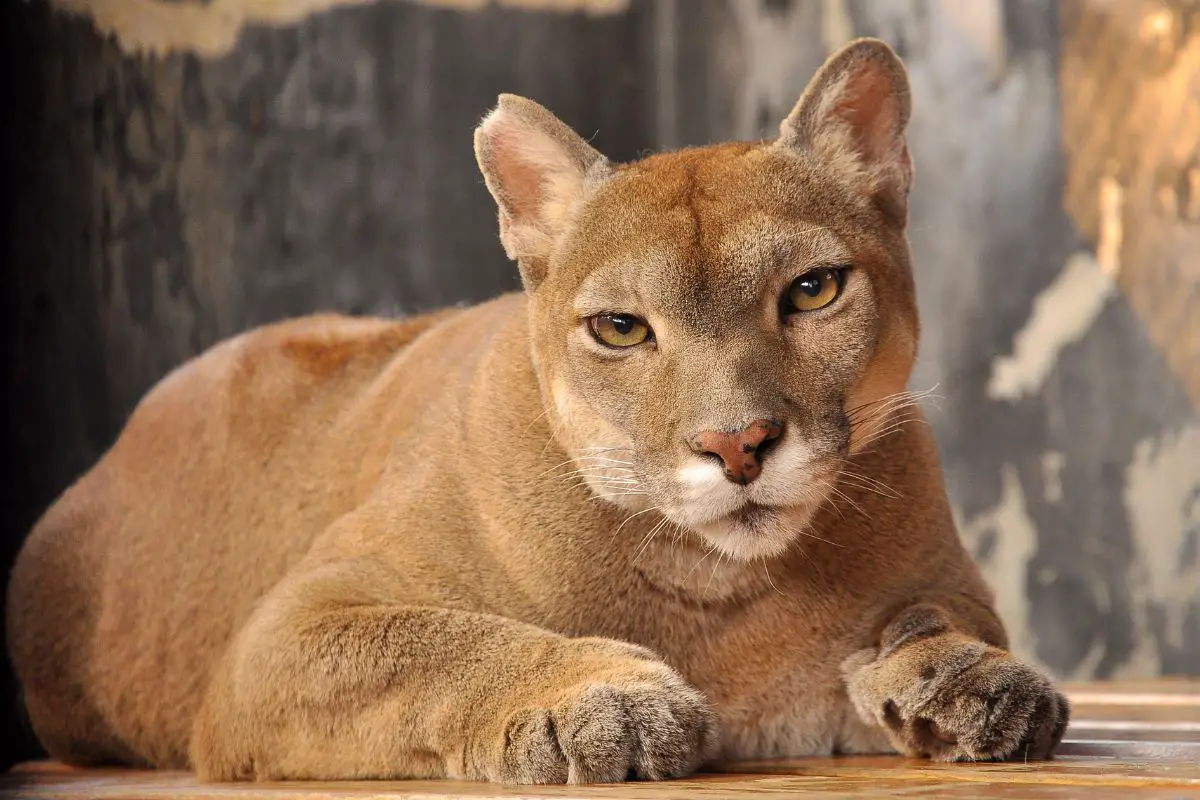
The mountain lion is a large, tan cat with a white or gray belly and chest. Their color can vary slightly depending on where in the Americas they are.
However, they will always be a shade of tan or a tawny brown unless they have a mutation.
Some mutations can cause animals, including mountain lions, to be black, white, or mixed variation.
Besides their recognizable tawny coloring, a mountain lion will also have a few black markings.
These markings will be around the animal’s snout, the tips of their ears, and the tip of their tail.
Adults have eyes that can appear to be a green-brown or yellow color. This coloring will eventually appear when the animal is about a year and a half old.
Mountain Lion cubs have a very different appearance from their parents.
They are covered in black spots to help them blend into their surroundings, but have the same tan or tawny colored fur as their parents.
Compared to adults, the young have more black on them. This black is visible on their faces, including their snout and above their eyes.
Cubs also have blue eyes that change color as they get older.
Typically, the larger animals are closer to the poles and will be in counties like Alaska and Argentina or Chile.
Closer to the equator, in countries like Colombia, Ecuador, and Brazil, mountain lions are usually smaller.
These animals typically only reach lengths of around 5 feet, and their tails are between 23 and 33 inches long.
So, from nose to the tip of the tail, a mountain lion can measure up to 7.7 feet long.
Up to the shoulder, these lions can measure up to a maximum of three feet, and they can weigh up to 220 lbs.
It should be said that the majority of mountain lions will be slightly smaller, as these numbers are on the upper limit.
Females are also smaller than males. The females are more likely to weigh up to 120 lbs, and are generally about ⅓ smaller than the males.
Bear
North American brown bears, often referred to as grizzly or Kodiak bears, depending on where they are, are very large animals.
They can weigh up to 1,700 lbs in extreme cases, but are usually somewhere between 700-800 lbs.
Males are typically larger than females, though both animals are impressive and incredibly strong.
Coloring can vary greatly for these bears. Some bears will be a very light brown, almost a white color, while others a dark brown and almost black.
They have no notable markings, as most bears are only one color.
Adults have brown eyes, and the cubs are born with blue eyes. Within a year, these blue eyes turn brown as the cub matures.
Cubs have no different markings on them, unlike the mountain lion, and are simple small versions of their parents.
As there are a number of brown bear subspecies, sizes vary greatly. The Kodiak bear is the second-largest bear after the polar bear.
Other subspecies of brown bears are considerably smaller and live on different continents, such as Europe or Asia.
Sounds And Calls
Mountain Lion
Mountain lions can make a range of sounds, but they can’t roar like lions or tigers.
A mountain lion will growl and hiss, like a house cat, and they can also purr. Males and females are known for their “scream” that can often be heard in the wilderness.
This scream is loud and shrill, and resembles a woman’s scream very closely. In fact, the two are often mistaken for each other.
This scream is the most well-known sound of a cougar. This sound is something that you should always look out for if you are out.
For female cougars, this scream is thought to indicate that they are ready to mate and is done to signal that to males in the area.
If you hear something that sounds like a screaming woman in the wild, you should move in the opposite direction.
Cougar cubs can hiss and make chirping sounds. This chirping is thought to be a way of them locating their mother, and the mother will chirp back.
Bear
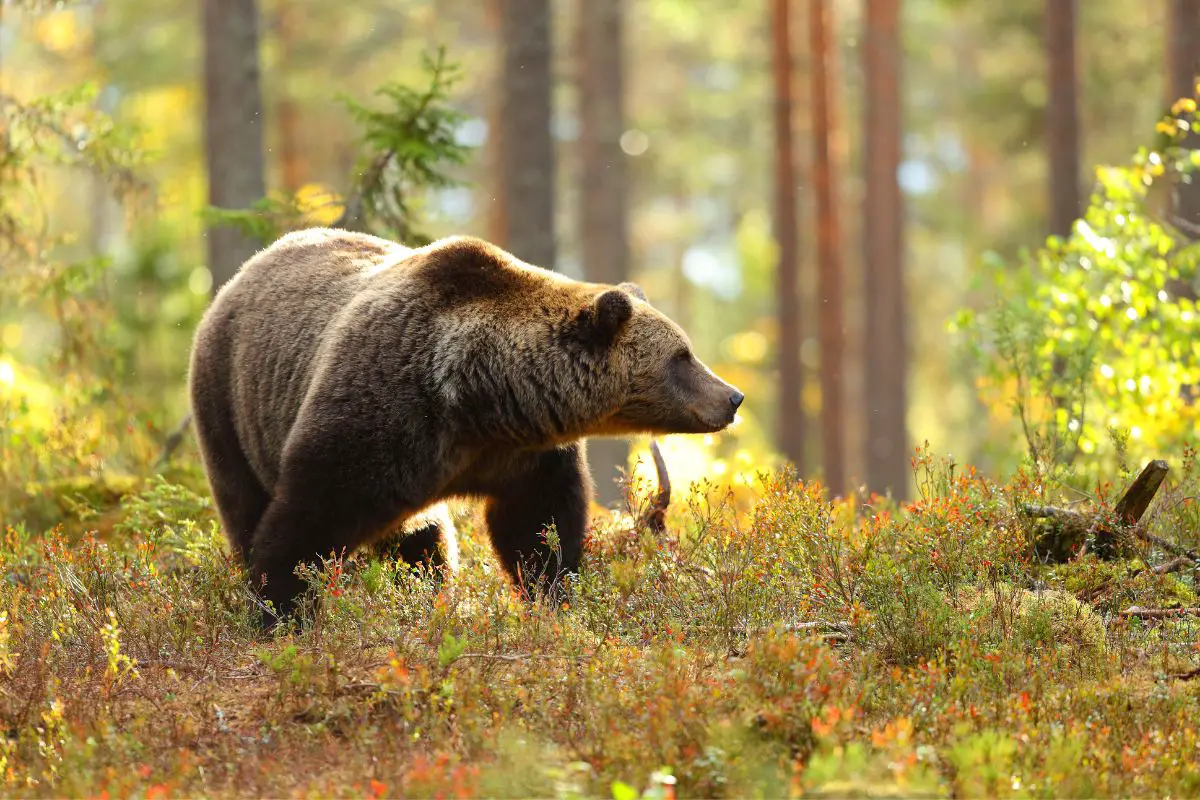
Brown bears are also known to make a wide range of vocalizations.
The majority of sounds they make are a sign of them being anxious or feeling threatened rather than being aggressive, however.
Bears are known to make tongue clicking and grunting sounds, which is common among mother and cubs.
These animals will also huff, snort, and “woof” – these are all everyday sounds that they make while going about their daily business.
Most bears will make these sounds, even when just walking around or taking a bath.
However, they will also snort as a way of showing that they are anxious, or if they are going to become aggressive.
Like mountain lions, bears also have the ability to make a sound that resembles a purr or a low humming!
This is more common among cubs who are nursing or animals that are enjoying a particularly good meal.
Bears raised by humans might also “purr” when they are with their carers to indicate affection and closeness.
If a cub is in distress, they might scream or bawl. This same sound, but in a lower pitch, will also be made by adult bears in pain.
Roaring and bellowing are also common sounds that a bear might make if they are aggressive.
They will also growl, moan, and huff depending on their circumstances.
Not only that, but a frightened bear may also make a jaw popping and teeth clacking sound, often used to warn their cubs of a threat.
Family
Mountain Lion
The mountain lion is part of the Felidae family, meaning that it is a cat.
Bear
Bears are part of the Ursidae family, which are caniforms, or dog-like carnivores.
Habitats And Range
Mountain Lion
Mountain lions cover an extreme range – all the way from Alaska to Argentina and even southern Chile.
Because of this, they can thrive in a variety of ecosystems as long as there is prey and shelter at their disposal.
It would not be unusual to see mountain lions anywhere from mountainous regions to deserts, forests, and wetlands.
No matter where they are, cougars typically prefer to stay away from humans and too much development.
There have been instances, however, where mountain lions are seen close to cities, or in city suburbs.
Bear
North American brown bears typically live in forests, woodlands, prairies, and alpine meadows.
They used to be present throughout the United States and even southern Mexico. However, their range has drastically reduced due to human activity and hunting.
Now, these bears are found in Canada and Alaska, and a number of northern states in the US.
These states include Washington, Idaho, California, and Wyoming.
However, as there are a number of brown bear subspecies, they are spread across the world. There are brown bear subspecies in parts of Europe and also Asia.
Russia has the largest population of brown bears in the world. There, there is thought to be a brown bear population of up to 100,000 animals.
Social Behavior
Mountain Lion
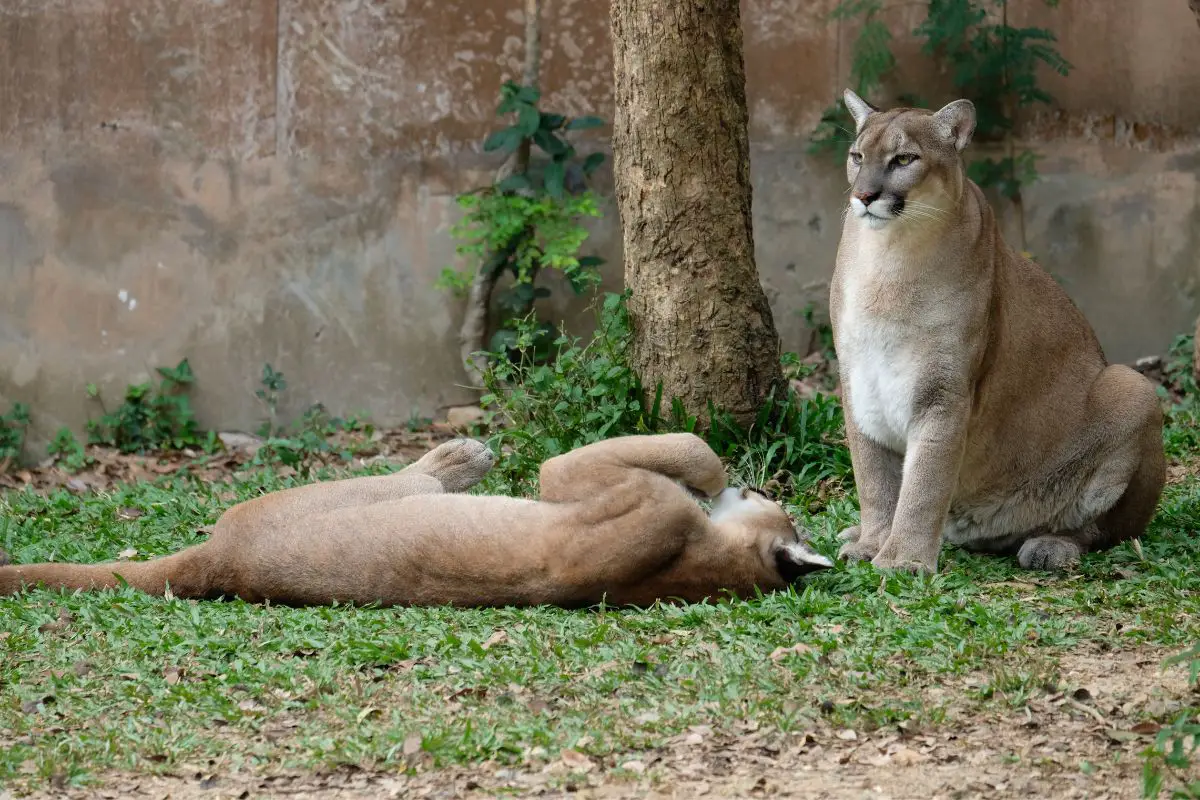
Mountain Lions are solitary animals. This means that they live alone and have their own territories.
The only time that these animals don’t live alone is during the mating season and when the female is caring for her cubs.
When solitary, these animals need between 50 and 125 square miles to roam, with males preferring more space.
Bear
Brown beats are usually solitary animals, except for when females are raising cubs.
During mating season, bears will also come together.
However, these bears are also known to gather in places where there is an abundance of food, such as rivers full of salmon. Adults need 300 square miles or more of territory.
Diet
Mountain Lion
Mountain lions are obligate carnivores, like all other cats. This means that they can only get the nutrients they need from meat rather than vegetation.
This does not mean that they cannot eat other food types, but simply that they would not get the benefit of doing so except for the pleasure of it or the flavor.
Mountain lions will typically hunt for things like deer or sheep, but will also eat smaller animals like mice and rabbits when available.
Bear
Bears are omnivores. They feed on a wide variety of things, including fish, berries, grass, fruits, and fleshy roots.
However, they are also known to be successful hunters, and will even go after prey such as elk, moose, and deer.
Breeding
Mountain Lion
Unlike many other animals, there is no set breeding or mating season for mountain lions. Mating can happen at any time of year.
However, the majority of mountain lion births take place in the late winter or early spring, but this is certainly not always the case.
Females will breed every two years.
These animals have a gestation period of 90 to 96 days. When the mother is ready, she will typically give birth to anywhere between 1-5 cubs.
These cubs will then stay with her until they are ready to live on their own. This is usually until they are around 15 months, or little over a year old.
However, some cubs will stay with their mother until they are over two years old before venturing off on their own.
Bear
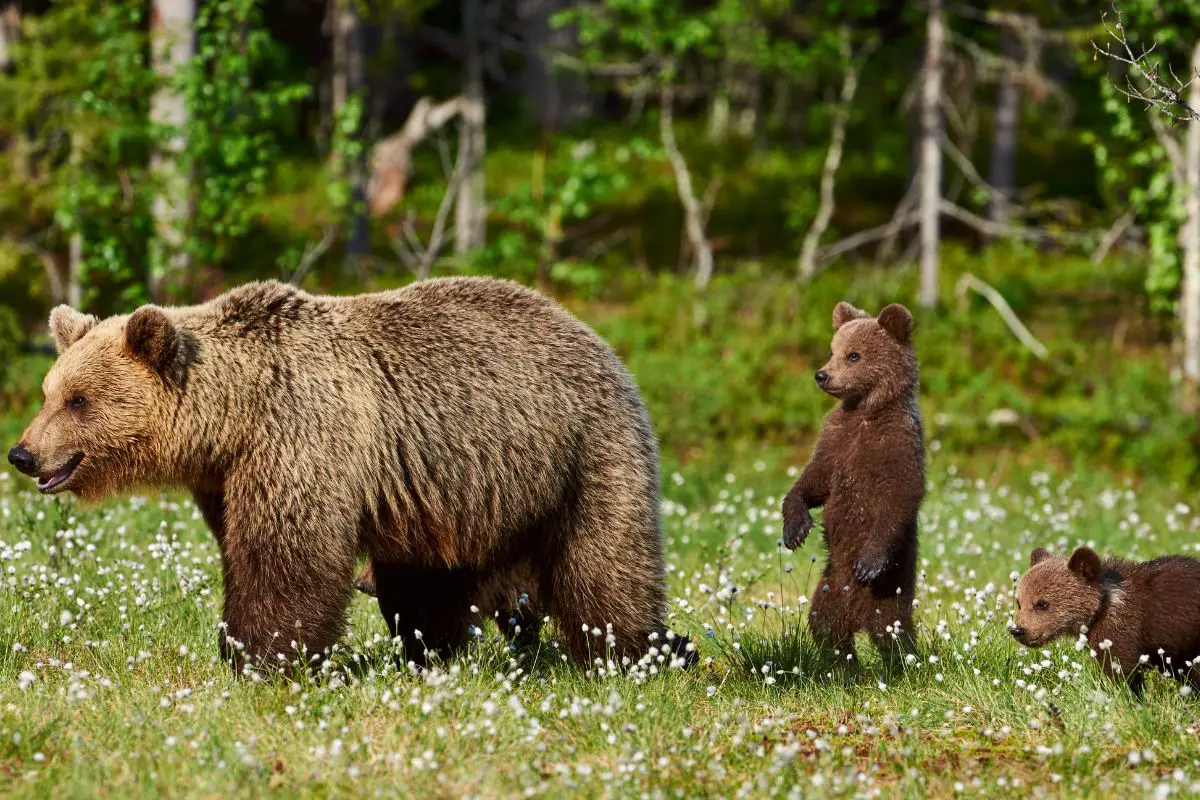
Brown bears will usually mate anytime between spring and early summer.
Females will breed every 2-4 years, and will only become sexually mature when they are 4-6 years old.
They have a gestation period of 180-270 days, and will give birth to their cubs in a den. Usually, females will have litters between 103 cubs, but litters of 4 have also been known.
Cubs will only leave the den for the first time when they are a few months old, and depend on their mother until they are a year old or more.
Who Would Win In A Fight – A Mountain Lion Or A Bear?
Considering the immense size and strength of the brown bear, a mountain lion would be very unlikely to win in a fight.
They simply wouldn’t be a match for a brown bear that can weigh over 1,000 lbs.
Final Thoughts
Mountain lions are large cats, while bears are in a class of their own. The biggest differences between a mountain lion and bear lie in their classifications and appearance.
While both animals are typically solitary, they have different diets, as bears are omnivores and mountain lions are obligate carnivores.
Their appearances are also very different, with mountain lions being cats and bears resembling dogs in some ways.
Bears are much larger and stronger, and can also be found in Europe and Asia, while mountain lions are only found in North, Central, and South America.
- Sink Your Teeth Into This: Analyzing the Powerful Lion Bite Force - September 8, 2023
- Siberian Tigers: Everything You Need To Know - September 4, 2023
- Do Lions Eat Humans? Understanding Lion Aggression and Risks - September 4, 2023


